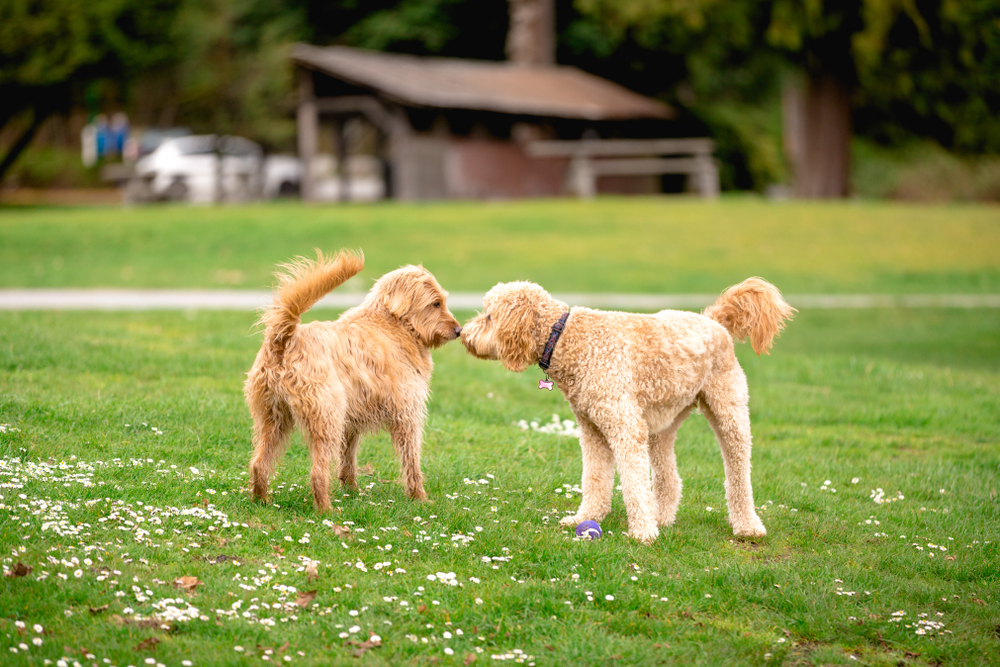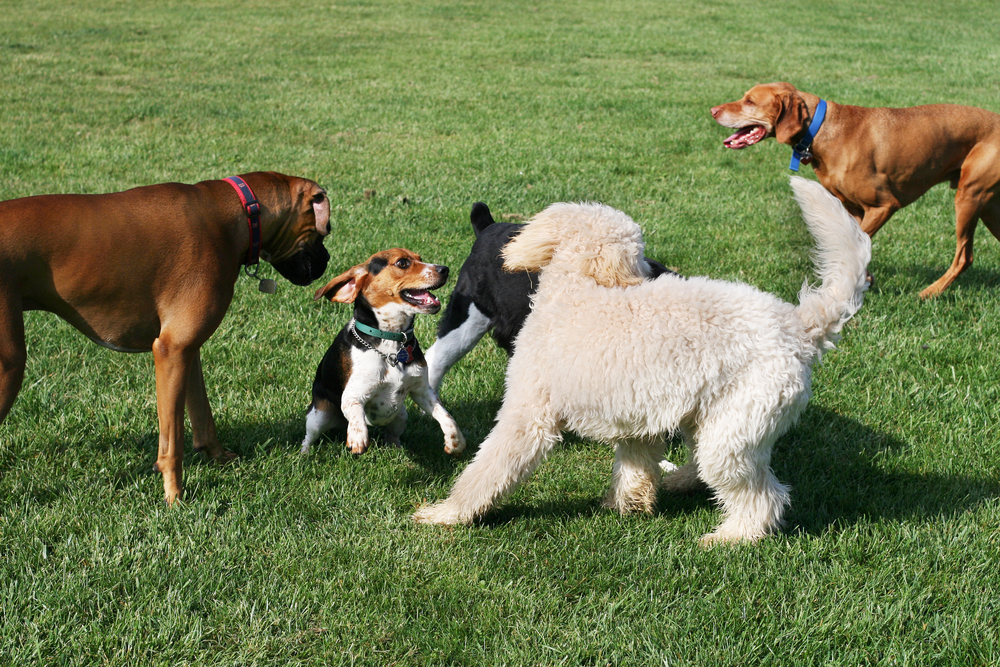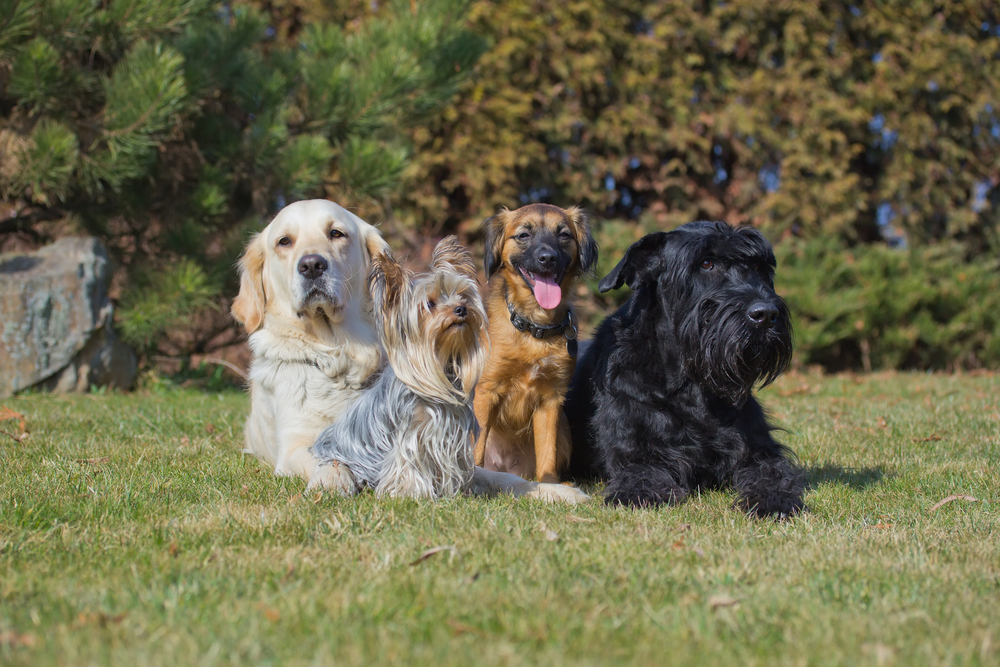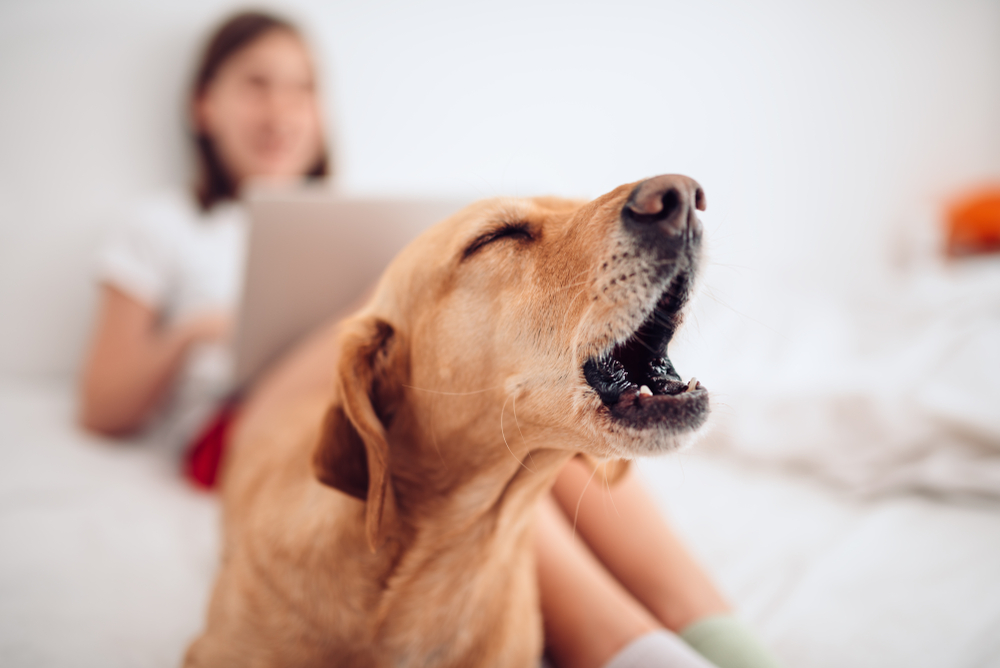As a Dog Owner, you’ve probably picked up on some of your dog’s many different forms of communication. You know their grunts, growls, and good morning whines. You know when they’re hungry and when they need to go outside.
But, you probably also know that as a human, you may never be fully fluent in doggy language! In fact, the question “How do dogs speak to each other?” is one that comes up often in the world of animal behavioural science, as researchers are constantly learning more about the intricate and complex nature of canine language.
 In this article, we’re going to cover some of the basics of how dogs talk to each other so that you can drop in on their dog park conversations!
In this article, we’re going to cover some of the basics of how dogs talk to each other so that you can drop in on their dog park conversations!
Get ready for your first lesson in doggy communication.
How do dogs speak to each other verbally?
For those of us who don’t speak dog as a first language (a.k.a. humans), verbal communication is often the easiest way for us to begin to understand what our dogs are trying to say. Canines rely on a variety of vocalisations to speak to one another, but here are a few of the most common:
- Barking. Barking is one of your dog’s primary forms of verbal communication with other dogs, and their barks have a variety of different meanings. There are playful barks, warning barks, startled barks, and nervous barks that your pup may use to invite play, maintain their personal space, or warn others about potential danger. You can learn more about the many different kinds of barks in our article, What Your Dog is Trying to Tell You When they Bark.
- Howling. If your dog wants to communicate with another dog over a large distance, they may tilt back that snoot and let out a howl. This is common in doggy family members who have been separated and are trying to locate their pack members.
- Laughing. Amazingly, dogs do have the ability to laugh, but we humans often mistake it for simple panting. In fact, dogs laugh while playing with other dogs as a way to show enjoyment.
- Sighing. Sighing is another vocalisation with many different meanings. Sighing is a way for dogs to show one another that they’re uncomfortable, frustrated, or on the flip side, contented and relaxed.
- Snarling and growling. Not all vocalisations are friendly ones, and snarling and growling is all about telling others to back off. Often, dogs will have passed through a list of other messages, such as posturing and eye contact, before resorting to this type of verbal communication.
How do dogs speak to each other physically?
While verbal communication between dogs is often the most noticeable to us, dogs actually rely much more heavily on physical cues to talk to each other. If you take a closer look at your dog’s interactions with other puppers, you might see some of the following:
- Play behaviours. Play between dogs is a crucial activity for building bonds and practising important life skills like hunting and defending the pack. And, in order for the game to stay fun and relaxed, dogs rely on body language that says, “I mean you no harm!” These include play bows, exaggerated movements, tail wags, and happy facial expressions.
- Eye contact (and avoidance). Even though dogs have evolved to seek out eye contact with us humans, this behaviour often means something completely different between dogs. Dogs may use eye contact to initiate a conflict over dominance or possession of food or a toy. And an avoidance of eye contact often means, “I do not want to fight.”
- Muscle tension. A happy, relaxed dog will walk around with an easy gait and open facial expression. But, when conflict arises, they convey to those around them that they mean business by tensing their muscles around the face and throughout the body.
- Yawning. Yawning can sometimes just be your dog’s way of saying that they’re bored or relaxed. But, other times, it’s a form of canine communication! Dogs may yawn as a sign of stress and an indication to those around them that they don’t want any trouble.
- Cowering behaviour. In many instances, dogs choose the path of peace by showing body language that says, “I’m really not interested in a fight” or “I’m very fearful about what’s about to happen.” This form of communication is characterised by a low stance and tucked tail.
- Belly up. A dog exposing their belly can be another tricky one for humans to understand. On the one hand, the belly up position, when combined with tense muscles and whale eyes, can be a sign that your dog is trying to avoid a fight by being submissive. But If your dog readily goes into the belly up position while playing with friends and showing other signs of enjoyment, they’re telling the dogs around them that they are totally comfortable.
There are many other forms of physical communication that you’ll notice when your dog is around other doggos. You just have to take a closer look!
There’s something in the air! Your dog is talking through pheromones
As humans, we can do a pretty good job of learning our dog’s verbal and physical communications. But, there’s one way that dogs speak to each other that is completely beyond our comprehension: smell!
Pheromones are one the most informative ways that dogs talk to each other and can be excreted through bodily fluids as well as through glands. When your dog sniffs a newbie at the dog park or pulls you over to a freshly marked tree, they’re actually having a conversation about age, background, mood, genetics, and health.
Unfortunately, we may never tap into this form of canine communication ourselves. But we can admire that it’s one of the best ways our dogs have to talk to each other!
 Overall, how do dogs speak to each other? Keep an eye on your pooch during your next dog park visit!
Overall, how do dogs speak to each other? Keep an eye on your pooch during your next dog park visit!
Learning more about how dogs communicate isn’t just fascinating. It can also help you foster a more enriching and enjoyable lifestyle for your dog. Allowing them to talk to other dogs, for instance, is a wonderful way for them to socialise and feel more connected to the furry friends around them. And, knowing when your dog is showing signs of discomfort can mean that you can step in before polite canine conversation breaks down completely.
If your pup is one to struggle with dog-to-dog speaking, make sure that you’re always there to lend a helping hand. If you’re not able to be there with your pup, it can be beneficial to leave them in the care of a dedicated Dog Sitter instead of in a kennel where they might be overwhelmed with so much social interaction.
Now that we’ve answered the basics of how dogs speak to each other, you can put your canine language learning skills to the test at your next dog park visit!


